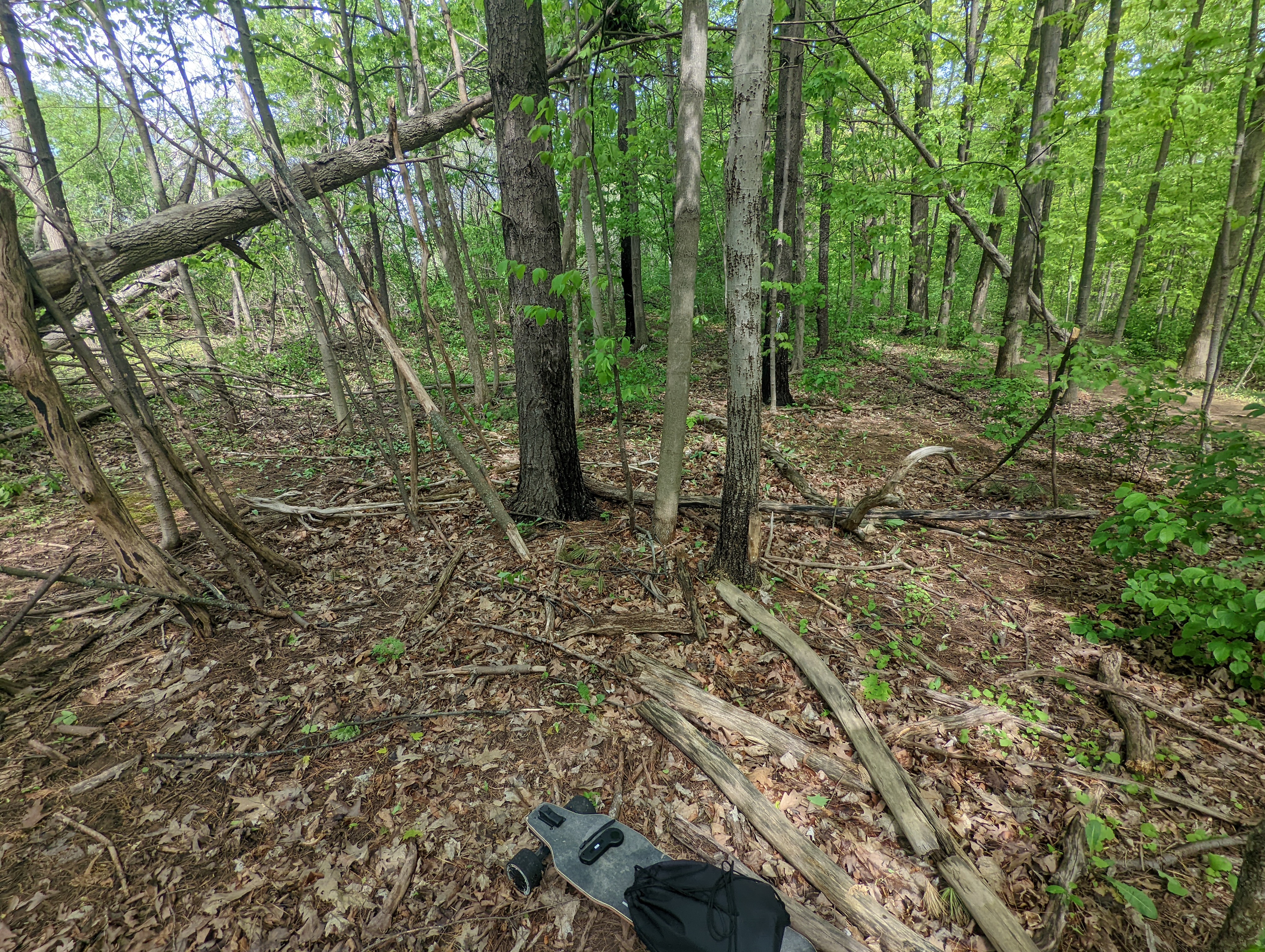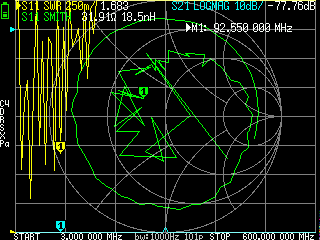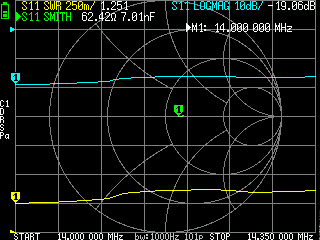Field Log: First look at the NanoVNA
Weekends are prime radio timeToday I had a rather anticipated package arrive in the mail.. a NanoVNA! For anyone unfamiliar with the NanoVNA, it is a small and cheap Vector Network Analyzer.

Network analyzers are tools used commonly by RF engineers to measure reflection and transmission properties of feed-lines and antennas (and a whole ton of other stuff I don’t entirely care about for now).
When I am out operating a radio somewhere away from the comfort of my bedroom, I tend to do a lot of guesswork to get my antenna designs right, since I simply work with random wire, yet still need to get something with a reasonable SWR up in the air.
My logic behind picking up a VNA was to have a little tool to fit in my radio bag, easily allowing me to sanity check my antennas before use.
My outdoor adventure
I am fairly well surrounded by dense trees, and a little patch of these woods are just across the street from me. This makes for a perfect spot to toss some wire up and operate away from the RF noise of the city (and people who want to ask me what I’m doing).

I headed over there this afternoon to set everything up, this time equipped with my new NanoVNA. Sidenote: longboards are great tables when you get to your destination.

Antenna setup
The setup of the day was comprised of some speaker wire and my Elecraft KX2. I planned to only operate on 20 meters, but ended up spending most of my time calling CQ on 7037Khz and barely touched the 20m band at all outside of some quick testing.
Using the NanoVNA, I was able to perform a quick scan of a fair chunk of the amateur spectrum against my impromptu antenna.


The images above were grabbed using the NanoVNA’s screenshot capabilities, and I have the display configured to show SWR across the bands (yellow) and a Smith chart (green). First is a sweep of the spectrum, followed by a readout of just the 20 meter band. Quite nice!
In conclusion, I quite like this tool, and really enjoy both its ease of use and ability to fit in my gear bag.

